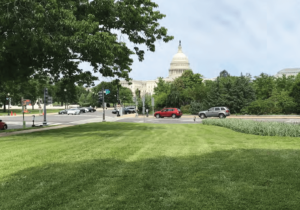While it can’t exactly be described as a surge or swell, the number of licensed in-state architects in the United States did, in fact, grow in 2020 to 121,997. That represents a slight leap of 5 percent from the previous year according to the recently released 2021 edition of NCARB by the Numbers, the tenth annual data report published by the Washington, D.C.-based National Council of Architectural Registration Boards (NCARB).
Five percent growth is nothing to scoff at considering the myriad challenges the profession faced during the coronavirus pandemic. Along with fluctuating demand and a shift to remote work, one of the key challenges facing licensure specifically were test center closures from March through June 2020, which resulted in the delivery of the Architect Registration Examination (ARE) plummeting by 44 percent. The ARE is a six-part exam required by all state licensing boards, and its passage is a pivotal step in the path to securing an architectural license.
These latest figures detailed in NCARB by the Numbers, however modest, represent a continued upward trend over the past decade. In total, there are now 17 percent more licensed architects than there were in 2011. The number of reciprocal (out-of-state) licenses also grew over the past year by 2 percent to 140,342. Looking at both resident (in-state) and reciprocal architecture licenses across all 55 U.S. licensing jurisdictions, California, not surprisingly, can claim the greatest number with 22,365. New York (20,309), Texas (15,470) Florida (11,559), Tennessee (10,486), and Illinois (10,338) all surpassed the 10,000 mark. Not including figures tabulated from the U.S. territories, Alaska and South Dakota have the fewest licensed resident and reciprocal architects—581 and 942, respectively—per NCARB’s latest data.
In addition to the continual growth of licensed architects, gender and ethnic diversity within the profession also increased or held steady across most, but not all, career stages. Perhaps most dramatically, the number of newly licensed women architects rose 3 percentage points from 38 to 41 percent in 2020.
Also significant is the proportion of individuals completing the Architectural Experience Program (AXP) in 2020 who identify as non-white or Hispanic. That figure reached 43 percent in 2020, 6 percentage points higher than in 2019 and a 16 percent t gain since 2011. However, as detailed by NCARB, these increases are largely limited to the Hispanic or Latino and Asian communities as the proportion of African American candidates has budged little over the past decade and continues to be underrepresented in the profession when compared to the U.S. Census data.
(A deep dive into demographic disparities as they relate to ARE pass rates, which features data never included in NCARB by the Numbers prior to this year, can be viewed here.)
Among the other key findings detailed in this year’s report:
- Over the past 10 years, 63 percent of all candidates stayed on the path to licensure; however, candidates of color are far more likely to stop pursuing licensure.
- More than 85 percent of newly licensed architects graduated from a program accredited by the National Architectural Accrediting Board (NAAB).
- The amount of time it took candidates to complete core licensure requirements—including earning a degree, completing the experience program, and passing the exam—fell to 12.3 years, a 3 percent drop from the previous year.
The full 2021 NCARB by the Numbers report can be viewed here.











